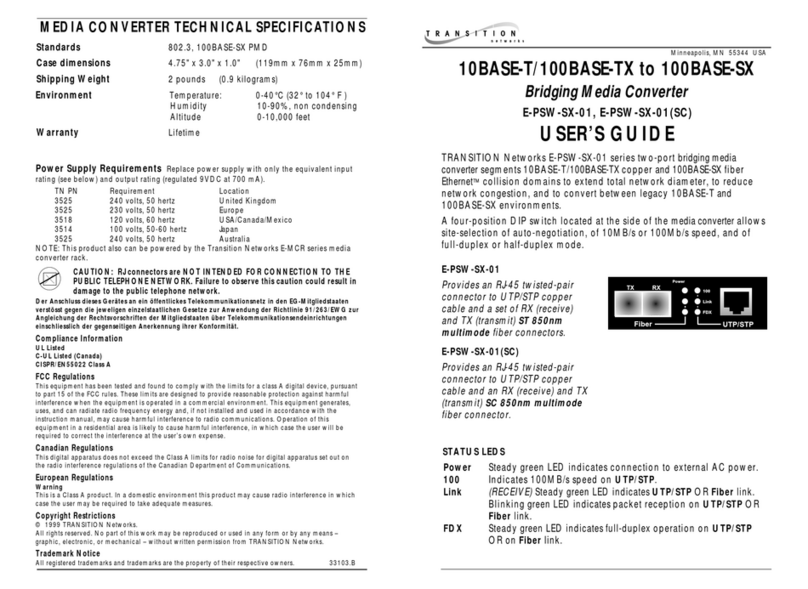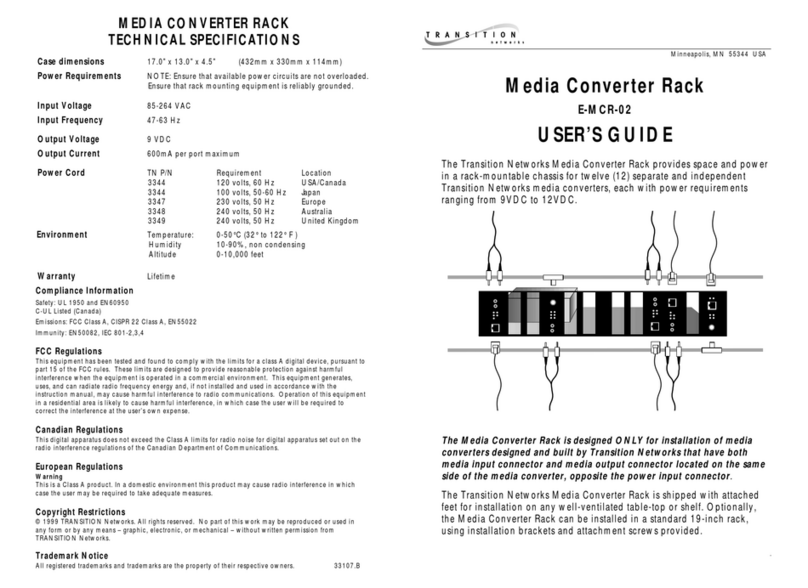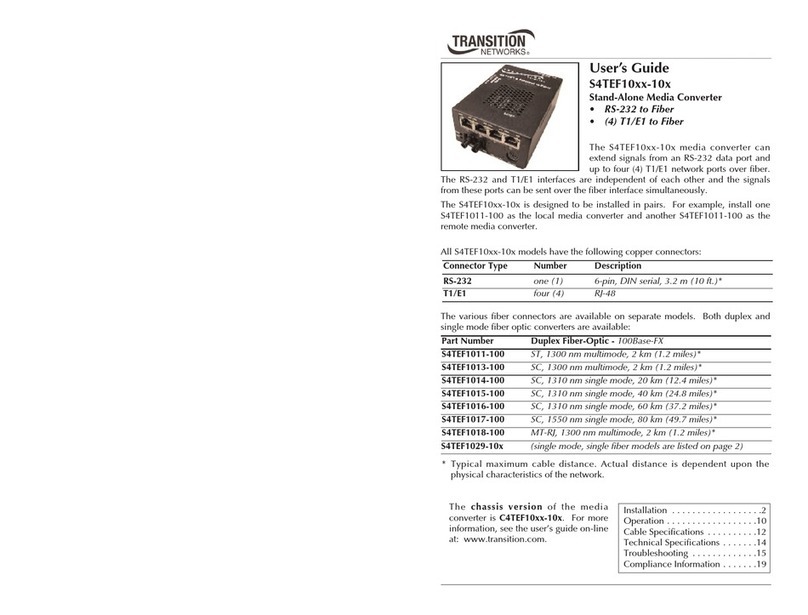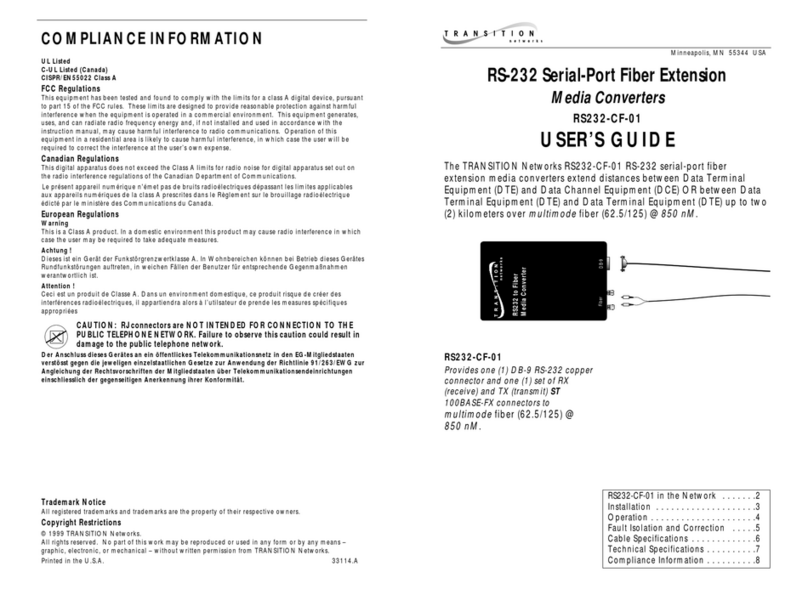Transition Networks SGFEB1013-120 User manual
Other Transition Networks Media Converter manuals
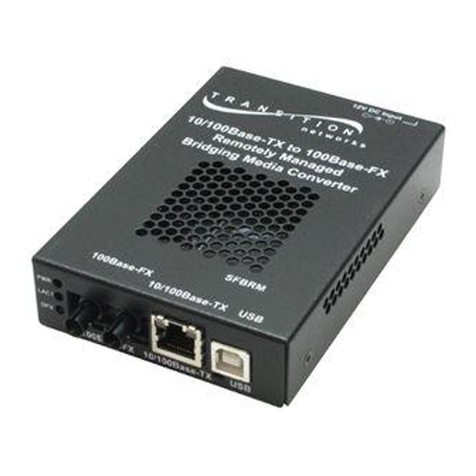
Transition Networks
Transition Networks SSRFB10xx-100 User manual

Transition Networks
Transition Networks E-TX-SX-02 User manual
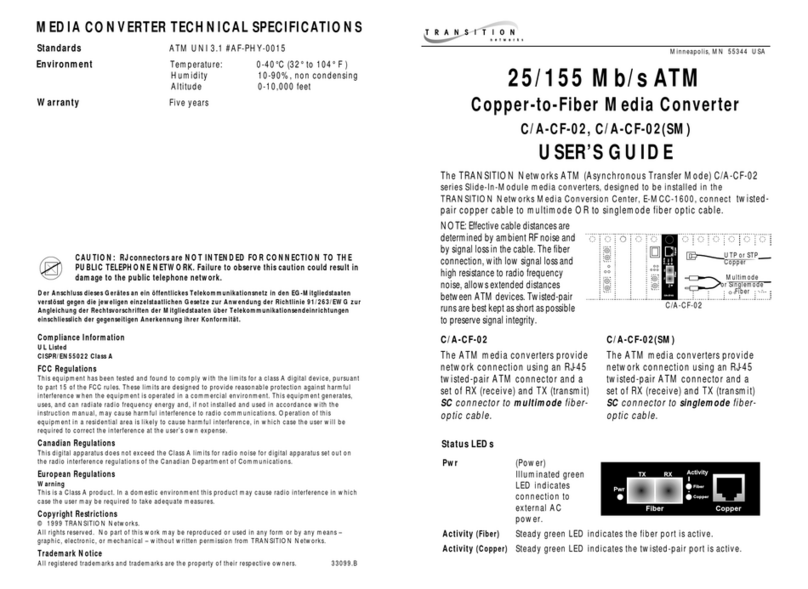
Transition Networks
Transition Networks C/A-CF-02(SM) User manual
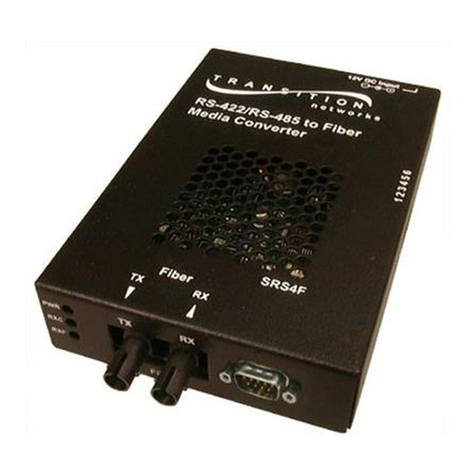
Transition Networks
Transition Networks SRS4F3111-100 User manual
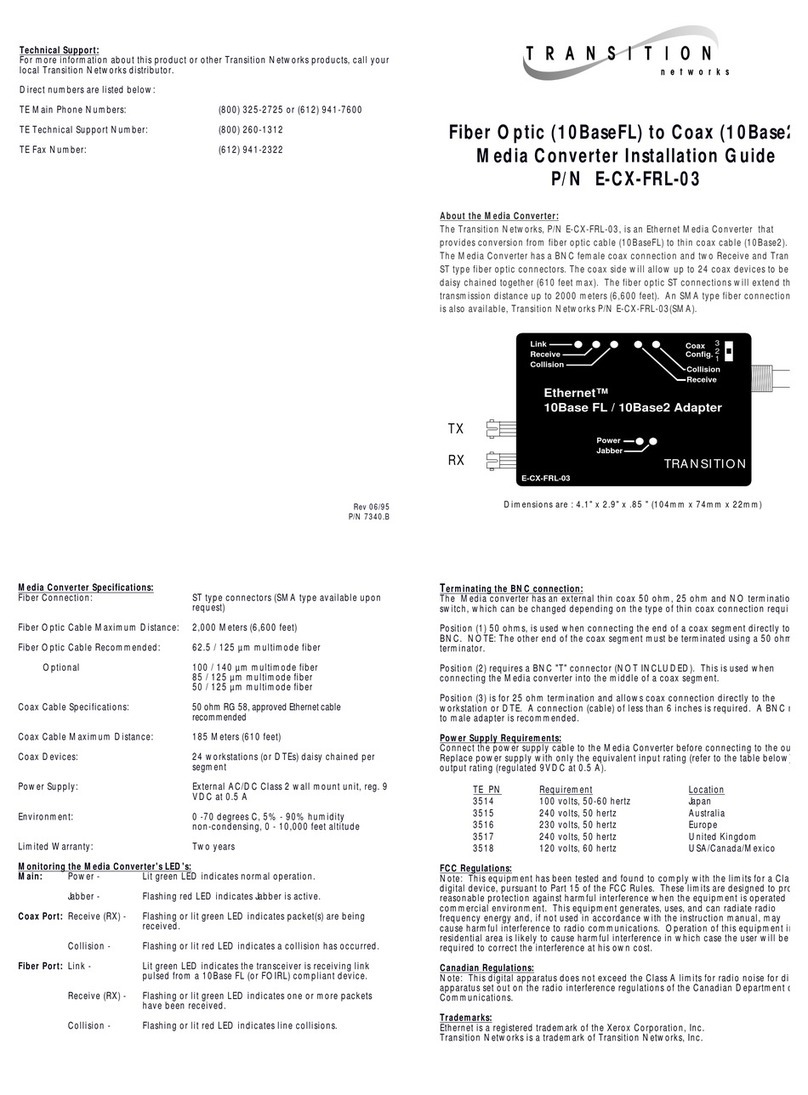
Transition Networks
Transition Networks E-CX-FRL-03 User manual
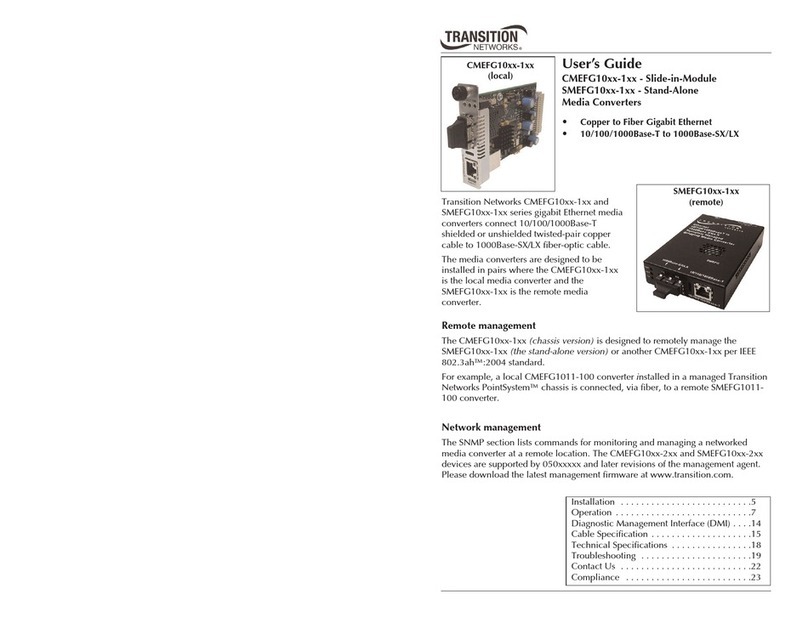
Transition Networks
Transition Networks CMEFG1013-100 User manual
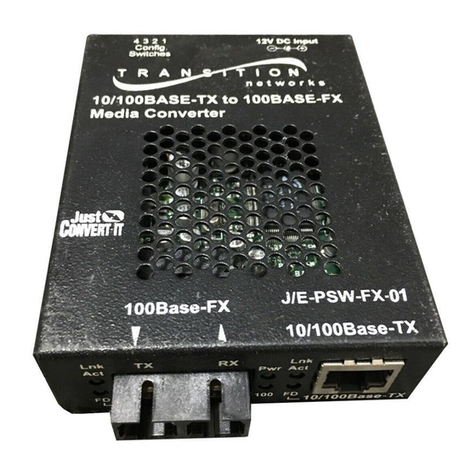
Transition Networks
Transition Networks J/E-PSW-FX-01 User manual
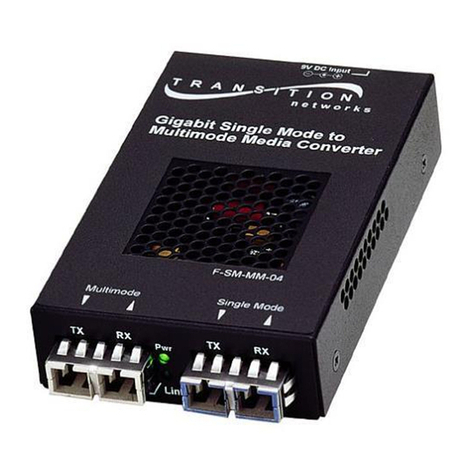
Transition Networks
Transition Networks F-SM-MM-04(LH) User manual
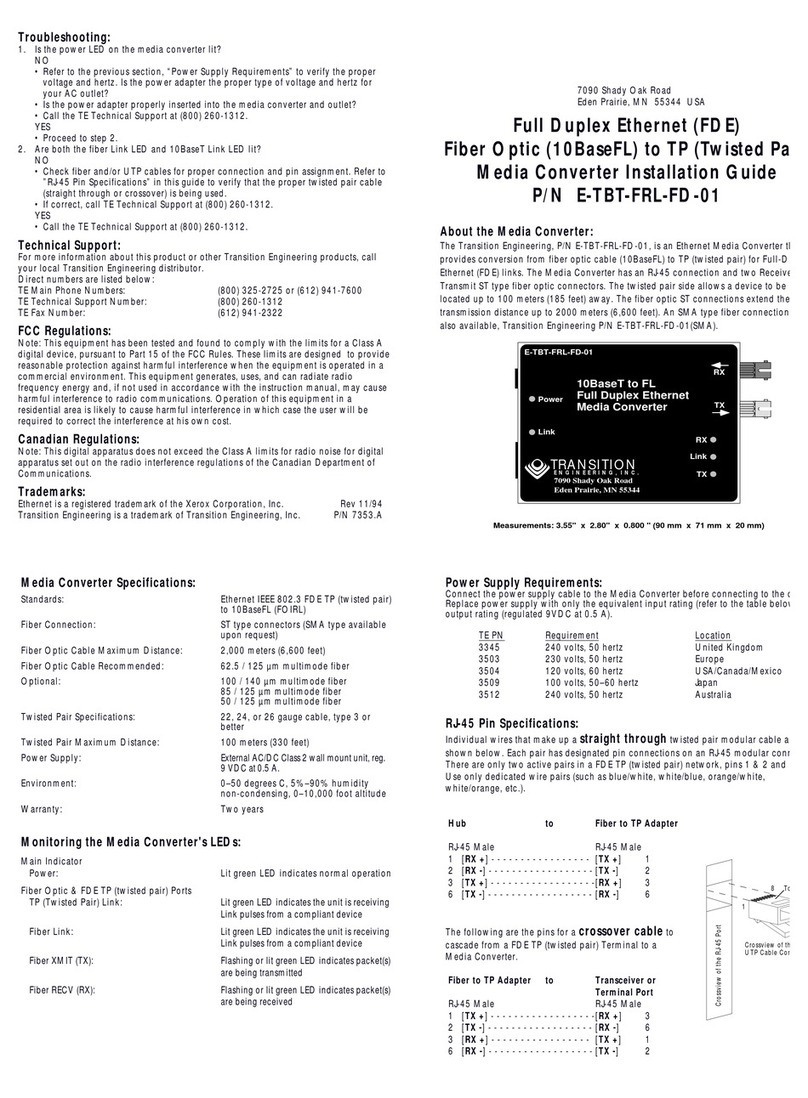
Transition Networks
Transition Networks E-TBT-FRL-FD-01 User manual
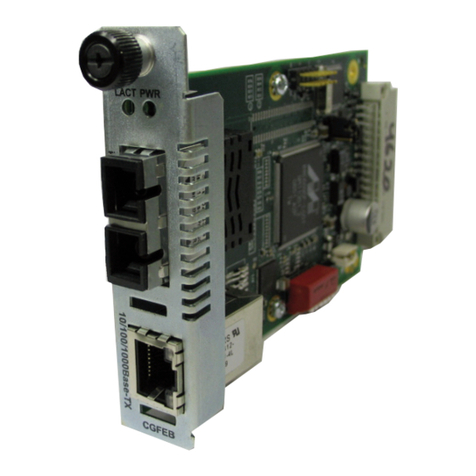
Transition Networks
Transition Networks CGFEB10xx-12x User manual
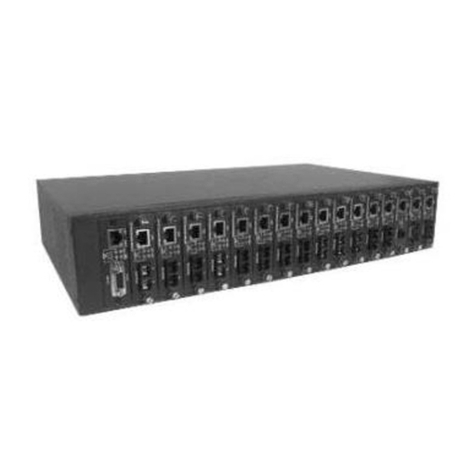
Transition Networks
Transition Networks Milan Raven Series User manual
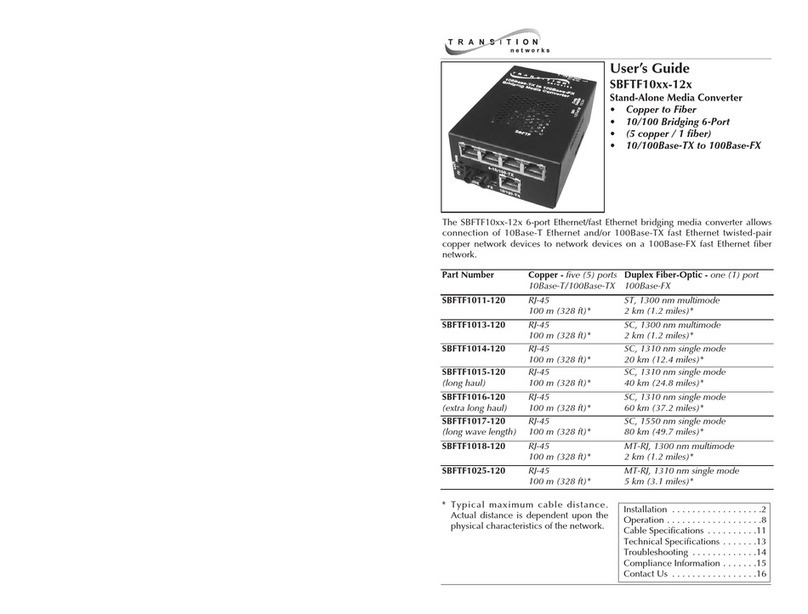
Transition Networks
Transition Networks SBFTF1011-120 User manual
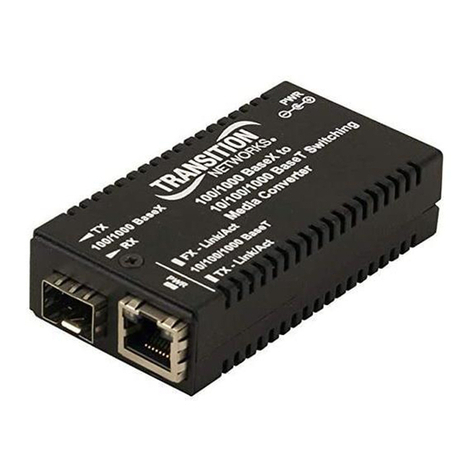
Transition Networks
Transition Networks M/GE-xSW-SFP-01-xx-U Series User manual
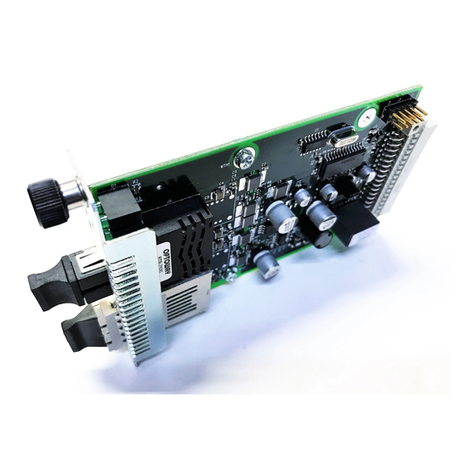
Transition Networks
Transition Networks CFMFF1314-210 User manual
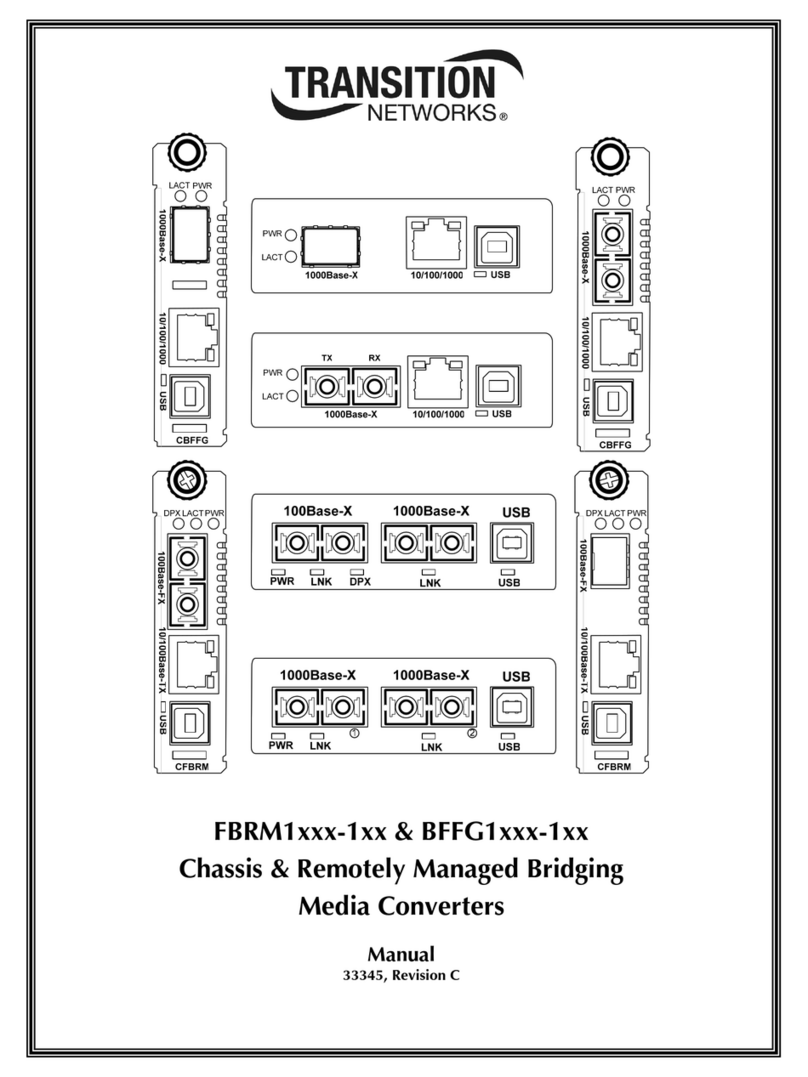
Transition Networks
Transition Networks FBRM1XXX-1XX User manual
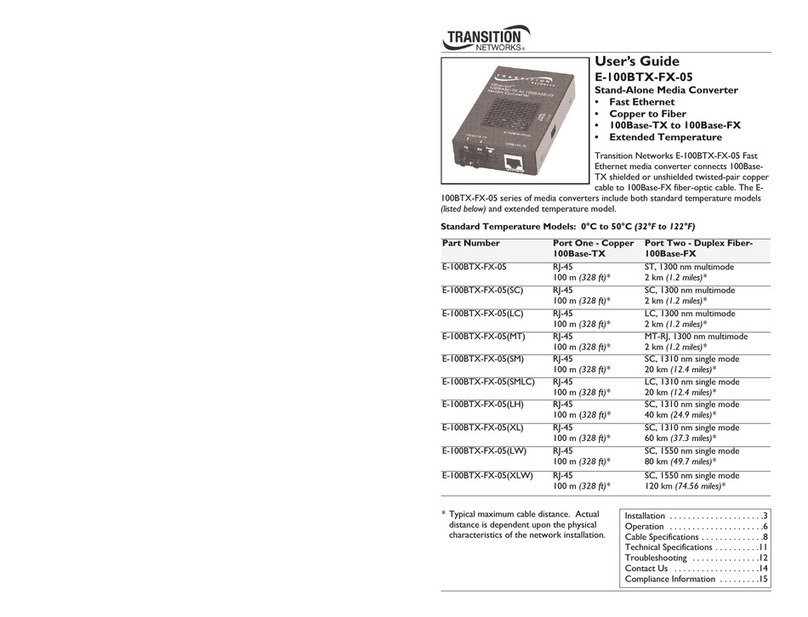
Transition Networks
Transition Networks E-100BTX-FX-05(LC) User manual
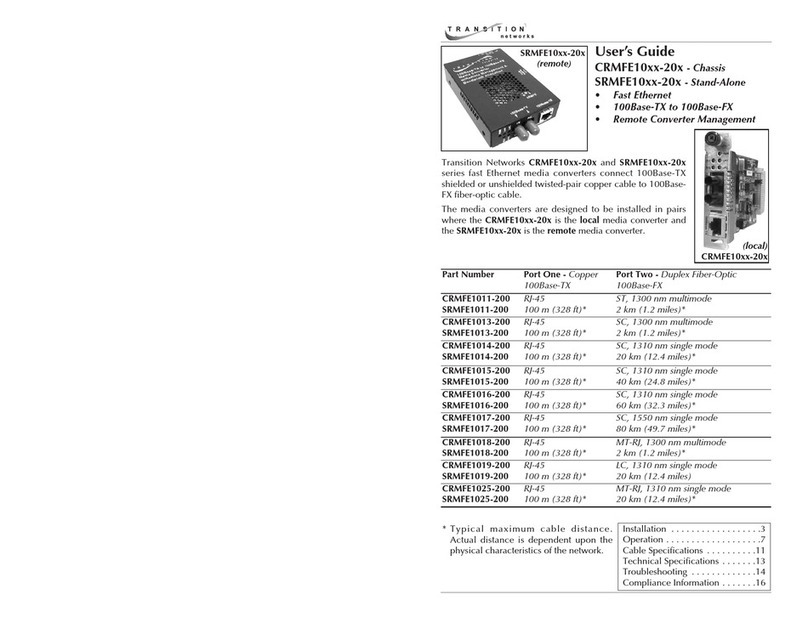
Transition Networks
Transition Networks CRMFE1011-200 User manual

Transition Networks
Transition Networks SBFTF10XX-15X User manual
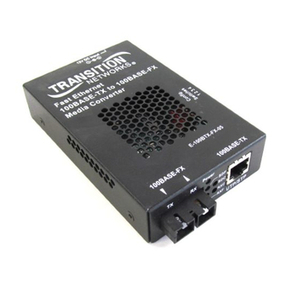
Transition Networks
Transition Networks E-100BTX-FX-04(LH) User manual
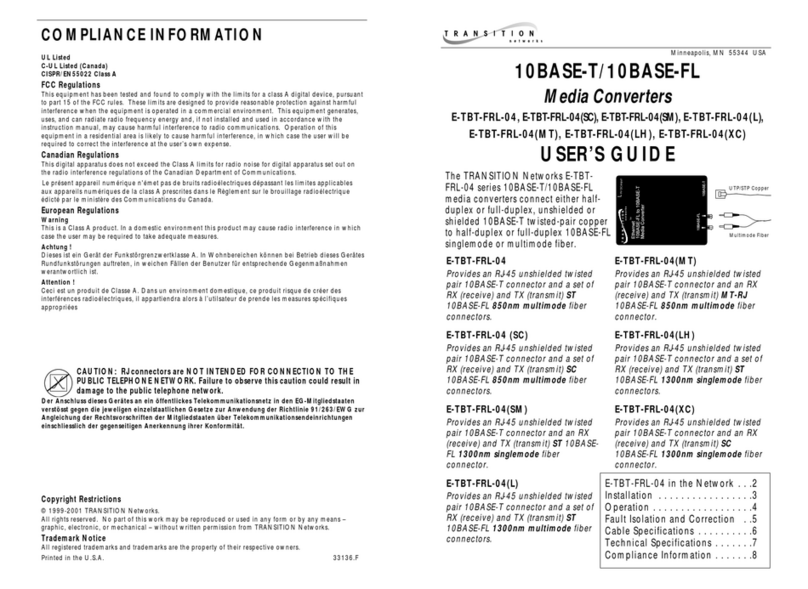
Transition Networks
Transition Networks E-TBT-FRL-04(L) User manual
Popular Media Converter manuals by other brands

H&B
H&B TX-100 Installation and instruction manual

Bolin Technology
Bolin Technology D Series user manual

IFM Electronic
IFM Electronic Efector 400 RN30 Series Device manual

GRASS VALLEY
GRASS VALLEY KUDOSPRO ULC2000 user manual

Linear Technology
Linear Technology DC1523A Demo Manual

Lika
Lika ROTAPULS I28 Series quick start guide

Weidmuller
Weidmuller IE-MC-VL Series Hardware installation guide

Optical Systems Design
Optical Systems Design OSD2139 Series Operator's manual

Tema Telecomunicazioni
Tema Telecomunicazioni AD615/S product manual

KTI Networks
KTI Networks KGC-352 Series installation guide

Gira
Gira 0588 Series operating instructions

Lika
Lika SFA-5000-FD user guide
